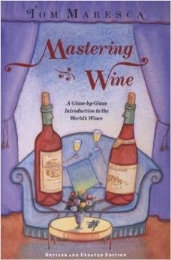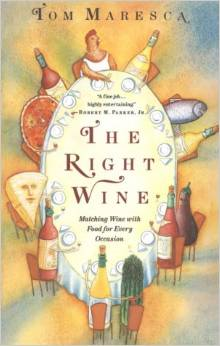“One Fine Wine” is an occasional series of posts about wines I’ve enjoyed recently
Every now and again, when our home supply of wine dips below a level I consider crucial for human life, Diane and I trot over to our off-premises storage unit and bring home a case to bolster our resources. Most of the cases I’ve squirreled away are mixed lots, and I’m never quite sure what’s going to turn up in them. That was how I found today’s star, a lovely Sangiovese-based wine from the Tuscan Maremma.
Diane had prepared a Neapolitan tinged dinner, in deference to my almost withdrawal-symptom need for tomato sauce and good mozzarella – and by the latter I emphatically mean fresh buffalo mozzarella, not cow’s milk fior di latte. Buon Italia provided both the cheese and some good potato gnocchi, which we had in a transcendent dish of gnocchi alla Sorrentina.
 So it was a very happy Ubriaco who sipped and swallowed his way through Mazzei’s Belguardo. This is a Toscana IGT from the Maremma region, and the 2007 version of it contained 80% Sangiovese grapes, 20% Alicante. In Tuscany, Alicante can be a crapshoot, and most of it often turns out to be Grenache (Garnaccia), so what I was expecting from this wine was exuberant fruit – the hallmark of Maremma-zone Sangiovese – perhaps reined in somewhat by barriques and age, now almost 13 years old.
So it was a very happy Ubriaco who sipped and swallowed his way through Mazzei’s Belguardo. This is a Toscana IGT from the Maremma region, and the 2007 version of it contained 80% Sangiovese grapes, 20% Alicante. In Tuscany, Alicante can be a crapshoot, and most of it often turns out to be Grenache (Garnaccia), so what I was expecting from this wine was exuberant fruit – the hallmark of Maremma-zone Sangiovese – perhaps reined in somewhat by barriques and age, now almost 13 years old.
I got that and then some! Despite its age, this Belguardo tasted intensely fruity and fresh with an antipasto of Italian salume: finocchiana, coppa dolce, and schiacciata picante. The fatty meats softened the wine’s tannins even more than age had, and they all but nullified any lingering barrique notes, making it taste youthful and lively and perfectly companionable with all the differing flavors those meats presented.
With our lovely gnocchi alla Sorrentina, the wine changed completely. With the sweet/acid tomato sauce and the lush, melting mozzarella surrounding the delicate gnocchi, the Belguardo became more austere and complex and deep – almost a different style of wine, yet still firmly rooted in the character of Sangiovese. This was simply a lovely wine, incredibly pleasing in radically different ways with those very different courses, and clearly nowhere near old age. It showed terrific structure and balance: an estimable wine from a great wine family.
The Mazzei wine pedigree is impeccable: They have been in the Chianti wine business since 1435, rooted in the same small town, Fonterutoli, in the heart of what is now the Chianti Classico zone. Brothers Filippo and Francesco now head the firm, with another generation of Mazzei in the wings. Since the beginning of Italy’s wine renaissance in the last century, they have been in the forefront of Tuscan wine making in both style and quality.
Their flagship wine is Castello di Fonterutoli, a Chianti Classico Gran Selezione. If there is any serious wine person who still does not know how great Chianti can be, this is a wine to learn on. Their Siepi, a blend of Sangiovese and Merlot, likewise sets the bar for supertuscan wines. They make as well a monovarietal Sangiovese called Mix36, which is a blend of 36 different clones of Sangiovese: It recently won Tre Bicchieri. And finally, they farm their Maremma property Belguardo, which produces the lovely Serrata that sent me over the moon and prompted this post. In short, the Mazzei are Sangiovese royalty, and every one of their wines attests to it.













